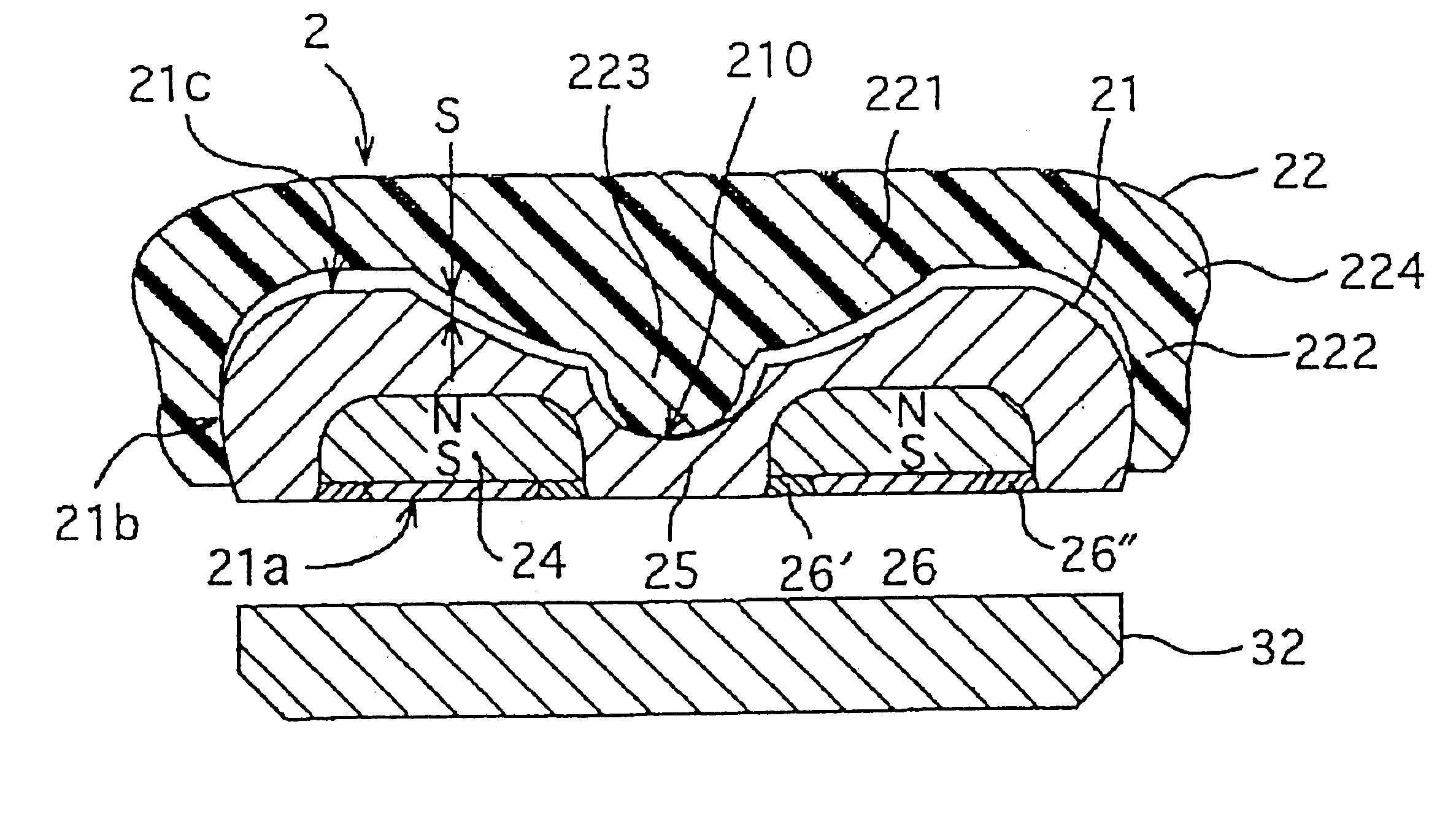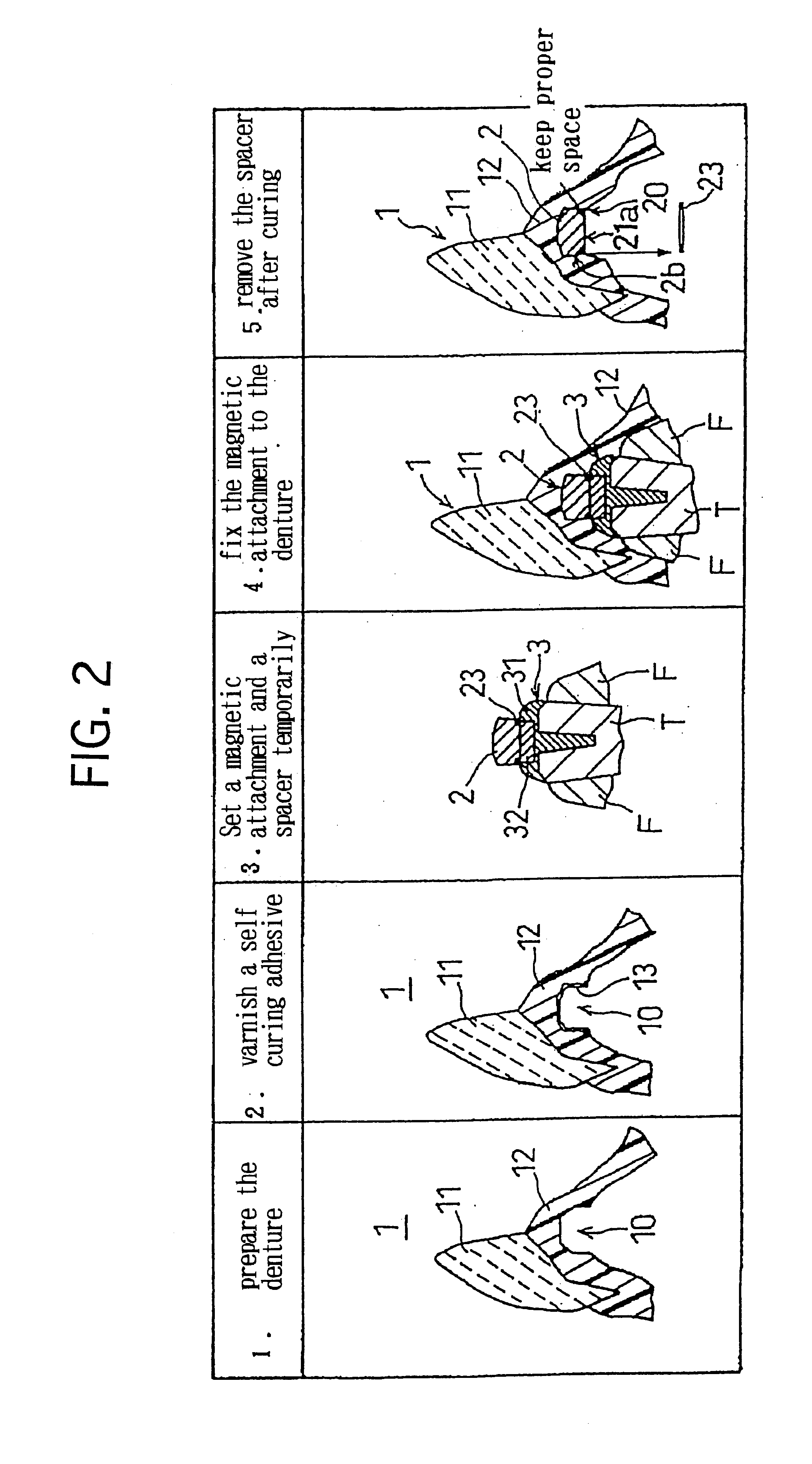Dental magnetic attachment and its fixing method including spacer
a technology of dental magnetic attachment and fixing method, which is applied in the field of dental magnetic attachment and its fixing method including spacer, can solve the problems of insufficient concentrated concentration is apt to injure the abutment teeth, and inability to achieve enough vertical shrinkage for practical us
- Summary
- Abstract
- Description
- Claims
- Application Information
AI Technical Summary
Benefits of technology
Problems solved by technology
Method used
Image
Examples
first embodiment
(The construction of the first example of the magnetic attachment)
The first example as shown in FIG. 4 is comprised with a magnetic assembly 21, a keeper 3 and a cushion cap 22. The magnetic assembly is covered by the cap 22 on the top side of it and they are unified mechanically to one. They are put into the base 12 of the denture 1. The keeper 3 is put on the teeth root T. The magnetic assembly 2 and the keeper 3 is attracted with a magnetic force.
Here the magnetic assembly 21 is compromised with a ring shaped magnet 24, a cap yoke 25 showing a complicated shape and a disk yoke 26. The magnet 24 is surrounded by the cap yoke 25 and the disk yoke 26 in the manner that a hole of the magnet 24 is filled up by the cap yoke 25. They forms a magnetic circuit to connect the magnet 24 with the keeper 32 to make a strong attractive force. Here it is important to insulate the disk yoke 26 from the cap yoke 25 magnetically. The inner sealing ring 26' and the outer sealing ring 26" are parts ...
second embodiment
FIG. 8 shows a cross section of the second example of the magnetic attachment in which a helper cushion 4 made of foaming material such as foaming rubber and urethane foam is inserted into the gap between the magnetic assembly 21 and the cap 22.
The helper cushion makes the effect to prevent some alien substance from entering the gap without reducing the cushion property.
third embodiment
FIG. 9 shows a cross section of the third example same to the second example except the following points. One is that the helper cushion 4' is made of elastic rubber such as silicon rubber. The second point is that the gap between the magnetic assembly 21 and the cap 22 is filled up partially by the helper cushion 4'.
The helper cushion makes the same effect to the second example and in addition, to reduce the impact by elastic compression when the cap 22 collides against the top of the magnetic assembly 21.
PUM
 Login to View More
Login to View More Abstract
Description
Claims
Application Information
 Login to View More
Login to View More - R&D
- Intellectual Property
- Life Sciences
- Materials
- Tech Scout
- Unparalleled Data Quality
- Higher Quality Content
- 60% Fewer Hallucinations
Browse by: Latest US Patents, China's latest patents, Technical Efficacy Thesaurus, Application Domain, Technology Topic, Popular Technical Reports.
© 2025 PatSnap. All rights reserved.Legal|Privacy policy|Modern Slavery Act Transparency Statement|Sitemap|About US| Contact US: help@patsnap.com



